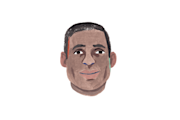When we obsessively scan and refresh our online news headlines and Twitter and Facebook feeds—endlessly scrolling to see a new headline, post, or article—we’ve fallen into doomscrolling.
Sometimes called “doomsurfing,” doomscrolling is a compulsive, addictive, and somewhat common, and fairly new human behavior.
Doomscrolling starts when social media users want to stay up-to-date with the latest news—specifically negative headlines.
When we doomscroll, we’re typically anticipating reading negative news. Hence, the “doom.”
With the collective trauma of the global COVID-19 pandemic and America’s stark political and cultural divide, we’re all living with feelings of grief, stress, trauma, and anxiety.
People who doomscroll are aiming to stay up-to-date on the news, avoid FOMO (aka the fear of missing out), and perhaps also distract themselves from negative emotions such as guilt, fear, and sadness.
While it’s important to stay aware of nationally and globally significant news, absorbing up-to-the-minute details about traumatic events can exacerbate our anxiety.
But, is doomscrolling damaging our mental health?
While it’s important to stay aware of news of social, cultural, political, national and global significance, absorbing up-to-the-minute details about traumatic events can exacerbate our anxiety.
Sometimes the world can seem like it’s completely filled with chaos and doom.
Alas, when we look to our screens and phones to find out more about complex political events or even as an escape from our own personal problems or feelings, it may have negative affects on our mental health and emotional wellbeing.
Sometimes the world can seem like it’s completely filled with chaos and doom.
Read on to find out more about the meaning of doomscrolling, the causes, when and where the term doomscrolling came from, and whether doomscrolling’s a sign of social media addiction.
Plus, how we can begin to cut doomscrolling out of our lives to gain back more time, improved focus, and better mental health.
What’s the meaning of doomscrolling? Where did it come from?
The first time the term “doom scrolling” appeared as a phrase was in 2013 in a post on Twitter by Sarah M. Anderson.
At the end of her tweet, Anderson used the hashtag “scrolling” following the word Doom to close out her thoughts.
While Anderson’s “Doom….#scrolling” had been around since 2013, the actual one-word term “doomscrolling” was officially coined in October 2018 on Twitter (pre-COVID).
The first time the term “doom scrolling” appeared as a phrase was in 2013 in a post on Twitter by Sarah M. Anderson.
Doomscrolling started gaining traction to describe the behavior of compulsively binging on dark, disturbing news that leaves social media users feeling increasingly agitated.
In a March 2020 New York Times article, journalist Kevin Roose described doomscrolling as the act of “falling into deep, morbid rabbit holes filled with coronavirus content, agitating myself to the point of physical discomfort, erasing any hope of a good night’s sleep.”
Doomscrolling started gaining traction to describe the behavior of compulsively binging on dark, disturbing news that leaves us feeling increasingly agitated.
Roose explained consuming intense amounts of disturbing news can cause us to get sucked up into a black hole of social media chaos.
Doomscrolling was later popularized by journalist Karen Ho in the midst of 2020 during the beginning of the novel coronavirus pandemic, when she created nightly Twitter reminders, urging people to “stop doomscrolling.”
As we can see from Google Trends, interest in doomscrolling has been growing again in 2022.
During the COVID pandemic, with so many people working from home and worried about the news, doomscrolling proliferated as a widespread behavior and a common concern.
Americans’ curiosity about doomscrolling, demonstrated by a sudden significant growth in searches on Google in April 2020, surged at the beginning of the pandemic.

As we can see on the latest chart from Google Trends, interest in doomscrolling has been growing again since the start of 2022.
This is likely due to a news cycle that included the war in Ukraine, the January 6th hearings, The Supreme Court repeal of Roe vs. Wade, and more new emerging COVID strains including Omicron BA 5.
Additionally, in January 2022, a study by the University of Florida determined doomscrolling is a “new, unique behavior—not just another trendy phrase.”
Why we doomscroll
The reasons why we doomscroll are nuanced.
According to the 2022 University of Florida study’s findings, doomscrolling starts when social media users want to stay up-to-date with the latest news—specifically negative news.
Over time, however, it turns into compulsive online scrolling for negative information.
During COVID, with so many people working from home and worried about the news, doomscrolling became a widespread behavior and a common concern.
“It’s the combination of living through a crisis and having a smartphone with a newsfeed that never ends,” says researcher Dr. Benjamin K. Johnson, Ph.D., in the study’s press release. “It just keeps going—so, we keep scrolling.”
“It’s specific to the moment users are currently experiencing,” Johnson says. “Between the pandemic, political issues in the world, and mass shootings—people can get sucked into seeking bad news.”
A study by the University of Florida determined doomscrolling is a “new, unique behavior—not just another trendy phrase.”
Similarly, consider the behavior of drivers slowing down and looking out their windows on the freeway as they pass by a traffic accident. They’re called “rubberneckers.”
Doomscrolling is a digital form of rubbernecking.

How doomscrolling impacts your mental health
Is doomscrolling bad for our mental health?
From scientists, to toxic ex-boyfriends, to members of the British royal family (like Prince Harry), lots of folks have opinions on doomscrolling.
My own boyfriend had expressed negative feelings about my usage of social media, which was often filled with scanning social media feeds, due to the nature of my job as a journalist.
Sometimes my online activity could definitely be classified as doomscrolling. And, in my (now) ex-boyfriend’s defense, his frustration with my social media behavior was not as if it was without scientific backing.
Excessive screen time is documented to create mental and emotional health issues for adults, teens, and children.
Social media usage can, indeed, bring extra stresses and complications to your life–from “phubbing” aka phone snubbing to seeing and taking in too much upsetting or violent news.
Excessive screen time is documented to create mental and emotional health issues for adults, teens, and children.
Several studies, including those done in 2013 and in 2011 showed that excessive use of smartphones paired with negative attitudes and feelings of dread may increase the risk of anxiety, depression, cognitive impairments, and sleeplessness.
What are the negative impacts of doomscrolling?
Doomscrolling has several potential negative effects– from anxiety, depression, and relationship issues, to inability to get quality sleep and waking up every night at 3 a.m. or 4 a.m.
According to the 2022 University of Florida study’s authors, it remains unclear if doomscrolling causes anxiety, or whether anxiety leads to doomscrolling.
While the study’s authors see signs that anxiety and doomscrolling feed off each other, establishing the cause and effect of doomscrolling requires further research.
For me, doomscrolling not only added to my bouts of anxiety and depression but it, rightfully, also upset my now ex-boyfriend tremendously. We argued about it frequently.
When is doomscrolling and social media use a problem?
Doomscrolling and overuse of our smartphones and social media are being recognized as vehicles for social media addiction.
While the study’s authors see signs that anxiety and doomscrolling feed off each other, establishing the cause and effect of doomscrolling requires further research.
The 2020 Netflix documentary The Social Dilemma examines how social media platforms are designed to nurture addiction in users, along with the platforms’ ability to manipulate people's views, emotions, and behavior.
An earlier 2016 TEDx Talk called “Quit Social Media” from assistant professor of computer Science at Georgetown University, Dr. Cal Newport, Ph.D. It’s been viewed over 8.7 million times.
In 2016 experts created a list of criteria to identify and diagnose a lack of control over cell phone use and mobile phone addiction.
The diagnostic criteria for smartphone addiction include:
Smartphone use for a period longer than intended
Using our smartphones to escape, avoid, or relieve a down or dysphoric mood (such as guilt, anxiety, or sadness)
Lack of access to our phones causing feelings of dread, anxiety, or irritability
Smart phone use interfering with our commitments and relationships
Decreased ability to think deeply or creatively
How doomscrolling affects our brains
According to 2021 research, doomscrolling negatively affects our brains in ways similar to addiction.
In Dr. Newport’s Tedx Talk, he describes the act of scrolling social media as akin to the allure and hold slot machines in Las Vegas hold over many people.
Doomscrolling negatively affects our brains in ways similar to addiction.
“The desired use case of these products is that you use [social media platforms] in an addictive fashion,” he explains. “Because that maximizes the profit that can be extracted from your attention in doing so.”
According to Dr. Newport, social media platforms specifically use principles from gambling in their user experiences.
“We now know that many of the major social media companies hire individuals called ‘attention engineers,’ to borrow principles from Las Vegas casino gambling, among other places,” he says, “to try to make these products as addictive as possible.”
According to Dr. Newport, social media platforms specifically use principles from gambling in their user experiences.
While we’re scrolling social media and experiencing the rush of the slot machine’s uncertainty and excitement, we’re potentially ending up increasingly prone to anxiety and depression, rather than reducing those feelings as we might imagine ourselves to be doing when we doomscroll.
According to scientist Susan Albers-Bowling, PsyD of the Wooster Family Health Center, when we doomscroll our “brain continues to loop around on a particular topic similar to endless scrolling. The behavior is not really about finding news, it’s about reducing anxiety.”

Tips to cut down or stop doomscrolling
Ending doomscrolling can be challenging—especially for those who work in journalism, or another field requiring up-to-date awareness of the latest news.
Becoming mindful of your online behavior and mobile phone usage will be necessary in order to help reduce doomscrolling.
Like any addictive behavior, the first step is to recognize a problematic behavior.
Removing yourself and walking away from activities and behaviors that are proving to be unhealthy can be key to a successful recovery.
One major step I’ve found in my quest to end doomscrolling is to practice the art of shutting off all devices and unplugging for certain set hours each day.
“Stopping or reducing doomscrolling involves moving beyond simply putting down your device,” says therapist and Monarch expert reviewer, Ellen Biros, MS, LCSW. “Remember, you can still stay informed in the news without becoming completely consumed.”
To help you stop doomscrolling, Biros recommends considering the following tips:
Limit your scrolling to a specific time and place
Practice mindfulness when reading or viewing an article, ask yourself how it makes you feel
Turn off or manage notifications on your device
Commit to reading only positive news stories
If you absolutely cannot avoid doomscrolling due to the nature of your job or work, you’ll have to be incredibly disciplined about shutting down your devices during key times each day to give yourself a mental break.
Find an accountability partner such as a close friend or family member for help in keeping you honest with this goal.
I found powering down my devices and keeping fairly consistent end times worked best when I had someone who would help let me know when I was not powering down during my goal DND (i.e. “do not disturb” or “do not doomscroll”) time each day.

Find a therapist who can help you stop doomscrolling and feel better
With the Monarch Directory by SimplePractice, you can browse therapists who accept your insurance, and book a free 15-minute initial consultation to discuss how therapy might help you overcome doomscrolling.
And with Monarch’s filters, you can even find a therapist who offers in-person therapy sessions, or book a telehealth video counseling session without ever having to pick up the phone.
Remember, if you find taking the steps above aren’t helping, speaking with a therapist may.
READ NEXT: A Therapist’s Perspective on Mental Health Memes
Need to find a therapist near you? Check out the Monarch Directory by SimplePractice to find licensed mental health therapists with availability and online booking.





